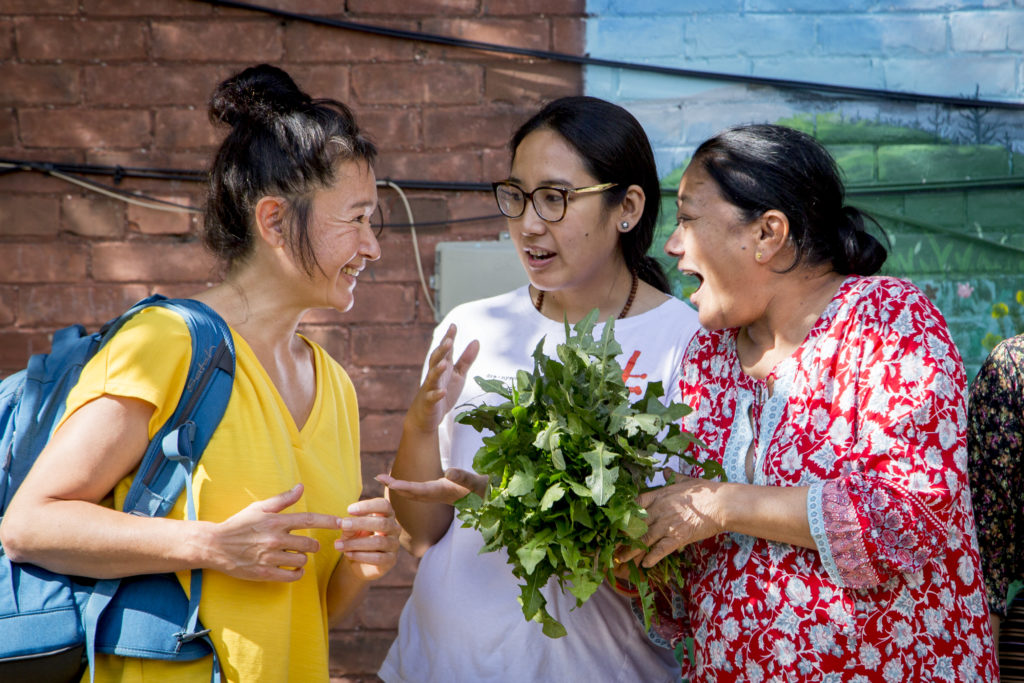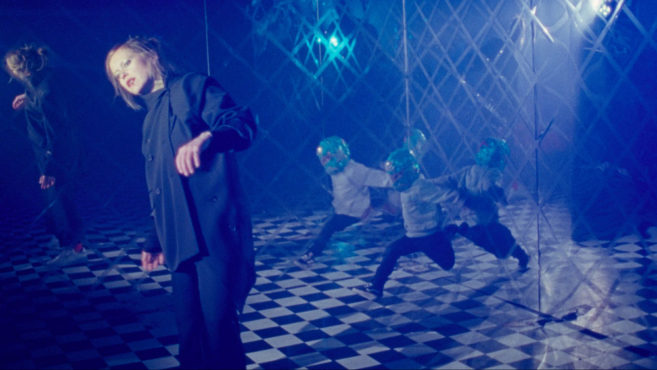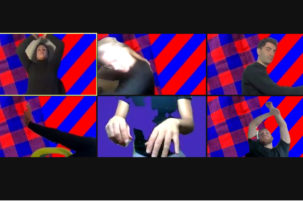Yaniya Lee: You worked with Tibetan gardeners in the local Parkdale neighbourhood of Toronto for this iteration of Freeplots, which is in your survey exhibition “This is the future” at the Art Gallery of Ontario. Earlier this year at the Serpentine Galleries you mapped the data of wealth distribution from the surrounding neighbourhood to create your augmented reality work Actual Reality. These can be read as a form of social practice. Can you talk a little bit about that transition in your work?
Hito Steyerl: Well, I think it’s actually really just a continuation of what I was doing. Specifically, after 2016, I started asking myself about the sites I was working in because it became more important to me to really situate the work also in relation to where it was being shown.
The most simple way to put this is: Who is the neighbour? Who are the people who live and work in the vicinity of these art spaces? What kind of conditions are they facing? And so on. But also to try to do this from my own perspective, meaning from a perspective of practice, of trying to do things.
The plants and gardening projects became very important to me because, having dealt with destruction and devastation and warfare for a long time, it also became important to think about reconstruction. Or about ways to engage with the material world which would be focused on growing, and maybe even something like healing. Plants are entities that are able to do that.
YL: Are you a gardener?
HS: I suck at gardening, unfortunately. I would love to be, but…no. I do spend at least an hour a day in our community garden, where I live, but I try to stay away from the plants because they tend to get scared. So I try not to interrupt whatever they are doing.
YL: Does working with plants within gallery and museum contexts present a particular set of challenges?
HS: There are always challenges, but it’s also kind of funny because I didn’t expect that so many stories would come out of that practice.
The idea was that I would use money that I gained through the sale of an artwork which ended up in a free port. [When I found out about it] I was like: What? This is a tax dodge, right? I couldn’t believe it. And I said, Okay, I’m going to reinvest this into horse manure and compost it and give it to this community garden in my neighbourhood and see what happens. (A beta version of Freeplots was in a community garden in Berlin, where we installed a version just to see how it would go, because we didn’t know anything about plants.)
So the first discussions we started engaging in [were about] what sort of manure do you actually use. And that’s also very site specific because this was an urban community garden, and this one in Berlin happened to be on the site where the circuses used to put up their tents, so they were working with camel manure. This was [the] best [kind of manure]. And also they were totally into pigeon manure, which was very surprising to me because pigeons are seen as pests, usually. But they said, No, no, it’s a very good fertilizer!
So you start accessing the city, or urban life, from a completely different perspective—in terms of the material level of how things work, on a biological or ecological level.
YL: What was it like working with this community here at the Milky Way Garden in Parkdale?
HS: Well, I came once to meet them and I have to tell you, I thought this would be some kind of experiment but it turns out that finally, I managed to make a work that makes me happy while doing it.
YL: How was the process of making this work different from other projects?
HS: So first of all, when I work with community gardens, also with this one, I end up being with women my age, which is already great. And there is a whole different energy around these processes of production, which I really very much enjoy. Also, I work a lot within processes of digital technology and so on and so on. It’s very rare for me to be in an environment that I thoroughly enjoy. I think starting to make these kinds of works finally did that.
 Hito Steyerl at the Milky Way Community Garden in Toronto. From left to right: Hito Steyerl, Tenzin Tsundue and Sova Lama. Photo courtesy the AGO.
Hito Steyerl at the Milky Way Community Garden in Toronto. From left to right: Hito Steyerl, Tenzin Tsundue and Sova Lama. Photo courtesy the AGO.
YL: Where do you think this project will go? How do you want to continue it or change it?
HS: The idea was to think about soil and territory, who owns it, who makes it, who produces it and its location. So basically what you see in Freeplots is a series of planters which are made out of the crates for those sold artworks. Unfortunately, not literally the crates for the artworks, but that’s the idea, that you would dismantle the crates but then reuse them locally to have this kind of practice going on basically in parallel to whatever else is happening—to have this very located territory which gets actualized in different locations differently with different groups of people but which is also mobile. It travels.
YL: It’s nomadic. Almost like some peoples: they retain their identity as they move.
HS: Yeah, it’s a nomadic garden, if you wish. But it doesn’t mean it is less rooted than other types of gardens. It has roots, but it’s a different kind of idea of soil and belonging.
I mean, you know, I’m from Germany. You know what kind of soil has developed there historically, and how soil was always tied to origin, racial purity and so on and so on. So in that sense, it’s really important for me to claim a different point, or to try to imagine a different kind of territory and also [a different kind of] soil, organic biologic matter, which is not tied to these ideas.
YL: Is the cost of the manure exactly the same as the cost of the artwork that was held in the free port?
HS: No! I couldn’t buy [that much]. Let me calculate how many tons of manure I could buy for the whole thing. It’s ridiculous: I could probably buy around 300 tons. And no community gardeners could use it. So I’m trying to reinvest reasonable amounts for community gardens, so they [don’t] get buried under manure. It was exactly the same income [that I invested,] but I think I still have some funding left for at least 20 community gardens to be supplied with manure.
YL: It seems to me that by creating these spaces, but doing it through local engagement and relationships with the people you’re meeting, what the soil retains as it moves from place to place is those relationships.
HS: It’s those relationships. It’s also seeds. It’s also the stories that will form to grow a palimpsest on the planters themselves.
YL: And what’s next?
HS: I will take it back to Germany, at some point, where we will try to grow a vertical potato garden.
YL: Potatoes!
HS: Yes. The potato is a term that immigrant communities use to talk about Germans. They say, “Oh, the Potatoes.” [laughs]
YL: You’re messing with land again, this time by changing its orientation to vertical—so you’re flipping it?
HS: I’m flipping it, yes. So that will be fine. We will do a potato rap.
YL: You mean after you’ve harvested them?
HS: Yes. There will be a music video to go along [with it].
YL: I’m going to come to Germany to see the premiere!
This interview has been edited and condensed.







